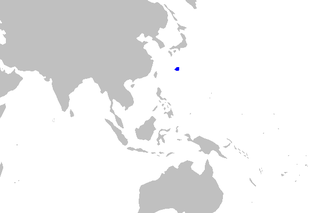
A tuna is a saltwater fish that belongs to the tribe Thunnini, a subgrouping of the Scombridae (mackerel) family. The Thunnini comprise 17 species across five genera, the sizes of which vary greatly, ranging from the bullet tuna up to the Atlantic bluefin tuna, which averages 2 m (6.6 ft) and is believed to live up to 50 years.

Mackerel is a common name applied to a number of different species of pelagic fish, mostly from the family Scombridae. They are found in both temperate and tropical seas, mostly living along the coast or offshore in the oceanic environment.

Herring are various species of forage fish, belonging to the order Clupeiformes.

Sardine and pilchard are common names for various species of small, oily forage fish in the herring suborder Clupeoidei. The term 'sardine' was first used in English during the early 15th century; a somewhat dubious etymology says it comes from the Italian island of Sardinia, around which sardines were once supposedly abundant.

Wobbegong is the common name given to the 12 species of carpet sharks in the family Orectolobidae. They are found in shallow temperate and tropical waters of the western Pacific Ocean and eastern Indian Ocean, chiefly around Australia and Indonesia, although one species occurs as far north as Japan. The word wobbegong is believed to come from an Australian Aboriginal language, meaning "shaggy beard", referring to the growths around the mouth of the shark of the western Pacific.

Sprat is the common name applied to a group of forage fish belonging to the genus Sprattus in the family Clupeidae. The term also is applied to a number of other small sprat-like forage fish. Like most forage fishes, sprats are highly active, small, oily fish. They travel in large schools with other fish and swim continuously throughout the day.

The rasptooth dogfish is a dogfish, found on the Kyushu–Palau Ridge in the northwest Pacific Ocean at depths of 360 m. Its maximum length is unknown. This species was originally described as Centroscyllium sheikoi, and subsequently allocated to the newly named genus Miroscyllium based on anatomical features not shared with other Centroscyllium. More recent molecular data suggest this species belongs to the genus Etmopterus, but as of June 2014 Miroscyllium sheikoi remains the valid name recognized by FishBase, the Catalog of Fishes World Register of Marine Species, and the IUCN

The starry sturgeon, also known as the stellate sturgeon or sevruga, is a species of sturgeon. It is native to the Black, Azov, Caspian and Aegean sea basins, but it has been extirpated from the last and it is predicted that the remaining natural population will follow soon due to overfishing.

An anchovy is a small, common forage fish of the family Engraulidae. Most species are found in marine waters, but several will enter brackish water, and some in South America are restricted to fresh water.
Clypeobarbus matthesi s a species of ray-finned fish belonging to the family Cyprinidae, the family which includes the carps, barbs and related fishes. This species is found in the basin of the Congo River.
Clypeobarbus is a genus of small cyprinid fishes native to Africa. Most species are restricted to the Congo River Basin, but C. pleuropholis is also found in the Chad Basin, while C. bellcrossi is from the Zambezi and C. hypsolepis is from rivers in Western Africa.
Clypeobarbus bellcrossi, the gorgeous barb, is a species of cyprinid fish native to Africa where it is found in the headwaters of the upper Zambezi River system. This species can reach a length of 9 centimetres (3.5 in) TL. It can also be found in the aquarium trade.
Clypeobarbus hypsolepis a species of ray-finned fish belonging to the family Cyprinidae, the family which includes the carps, barbs and related fishes. This species is found in West Africa where it is known from the Niger River and the upper basins of the Volta, Bandama and Agnéby River in Burkina Faso, Mali, Guinea, Ghana, Ivory Coast and Nigeria, with a disjunct population in the Niger Delta.
Clypeobarbus pleuropholis is a species of ray-finned fish belonging to the family Cyprinidae, the family which includes the carps, barbs and related fishes. This species is found in the Chad Basin in Chad and Cameroon, as well as the Congo Basin in Democratic Republic of Congo, the Republic of Congo and the Central African Republic. This species, as Barbus kemoensis, is the type species of the genus Clypeobarbus.
Clypeobarbus pseudognathodon is a species of ray-finned fish in the genus Clypeobarbus from central Africa where it is known from Lake Mweru, the Lobo River and the upper Lualaba River. Its max size is 5.5 centimeters.
Clypeobarbus schoutedeni is a species of cyprinid fish endemic to the Democratic Republic of the Congo where it is only known from the Dungu River. This species can reach a length of 3.8 centimetres (1.5 in) TL.
Clypeobarbus breviclipeus is a species of ray-finned fish in the genus Clypeobarbus. It is endemic to the Kwilu River in the Democratic Republic of Congo.
Sebastes koreanus, the Korean rockfish, is a subtropical marine fish distributed in the Northwest Pacific Ocean near South Korea. It usually lives at a depth of around 20 meters. It is demersal and oviparous, like all other rockfishes.









